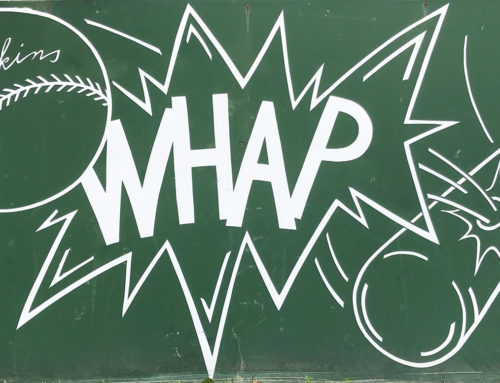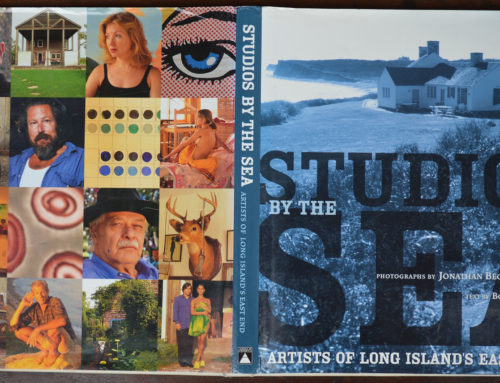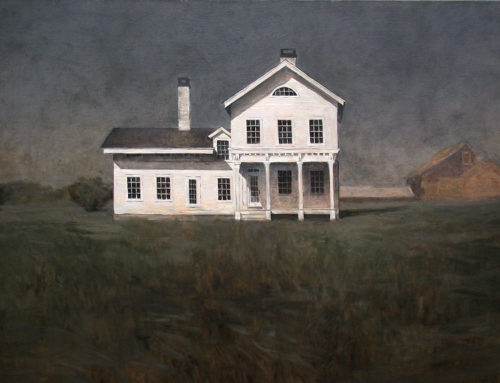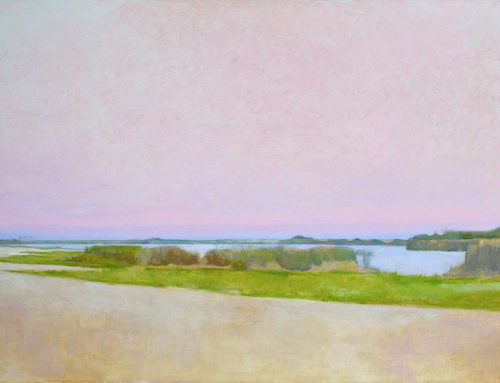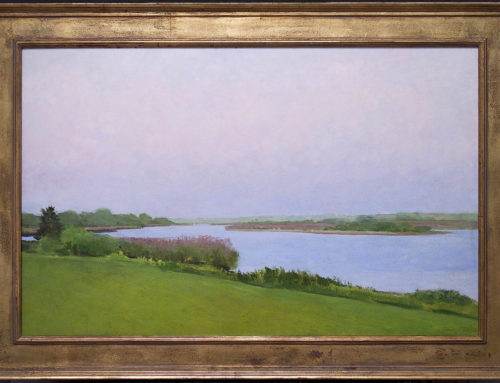At one time Cape Cod was my annual summer retreat to visit friends in North Truro. There are some striking similarities between the dunes on the East End and what you can find in the National Seashore on Cape Cod. Pockets of dunes, grasses, shrubs, pines and other plants are in some ways indistinguishable. I painted in the National Seashore year after year and never ceased to be amazed walking in with my painting gear. It’s breathtaking to walk up a 30′ high dune and discover another section 200 yards beyond that is much higher and when you make it to the top of that dune you discover the beach is a half mile away and the dunes stretch on for miles and miles in either direction. Spectacular doesn’t describe the majestic natural beauty of the place. There’s not quite that vast an area of dunes on the East End but there are some equally beautiful areas to explore and paint in. Most are accessible by foot. You can drive in but 4W drive is needed and a permit is required.

Dunes on the Napeague Stretch, oil on canvas, 26″ x 36″, private collection
Between Amagansett and Montauk lies an area of dunes along the Napeague stretch. It’s one of the few unspoiled beach front areas left on Eastern Long Island. I spent a few summers teaching at The Art Barge, located east of Amagansett, situated almost in the middle of this narrow stretch of land. “The Art Barge was the creation of Victor D’Amico who was founding director of Education at The Museum of Modern Art in New York from 1937 to 1970. Having built a home and established roots in Amagansett in the 40s and initiated MoMA-sponsored art classes in the 50s at Ashawagh Hall in the Springs, East Hampton, he enlisted the help of local fishermen in 1960 to bring a retired World War I Navy barge from New Jersey and beach it on the pristine shoreline at the head of Napeague Harbor.” Quoted from the Art Barge website. A wide and interesting range of art classes are still being taught there still. There’s a convenient place close to the Barge off Cranberry Hole Rd where I would meet my class for painting on location. It’s an area of secondary dunes sometimes referred to as Double Dunes where the dunes close to the ocean taper off and flatten out before they build up again.

Dunes off Cranberry Hole Road, oil on canvas, 20″ x 28″
Shrub pines and beach pea are growing next to each other in the sand. The dunes are a study of light, bright contrasts and subtleties in color. When it’s sunny it can be blinding. You need a wide brim hat and sun glasses. Shades help but I find there’s a problem correcting color when wearing them. Sometimes the glare gives me a migraine.

Dunes in Napeague, oil on canvas, 30″ x 40″
During one summer and into the fall I painted in the dunes on the Atlantic side not far from the Art Barge with a friend, Gordon Matheson. I met Gordon through the Art Barge. He joined a class I was teaching in plein-air painting. If we knew we were going to have a few days of good weather we’d load up my car and drive into the state park area, unload and stay all day. I’d go one way, Gordon would go another and we wouldn’t see each other until it was time to pack up. What I liked most about painting there was that no one else was around. One can think where it’s quiet, surrounded on all sides by dunes and beach pines. They block out the noise of traffic speeding by just a few hundred yards away. You’d never know they were there.

Napeague, oil on wood panel, 18″ x 24″, private collection
That was years ago. I doubt much has changed. However there’s not an unlimited amount of land on the East End and the Nappeague stretch is a very small area. During the hurricane of 1938 the stretch was under water from the tidal surge. For a brief time Montauk was an island. It could happen again. Summer now brings the 4-wheelers and this stretch of beach gets invaded like every other beach on the East End. That means beach fires, trash, broken bottles, plastic litter. And when nature calls, where do you go? Most visitors are aware of their footprint on this environment. Unfortunately not everyone cares. If you come here remember to take home what you bring in. It’s your East End so help keep this place unspoiled and ready for the next visitor.


